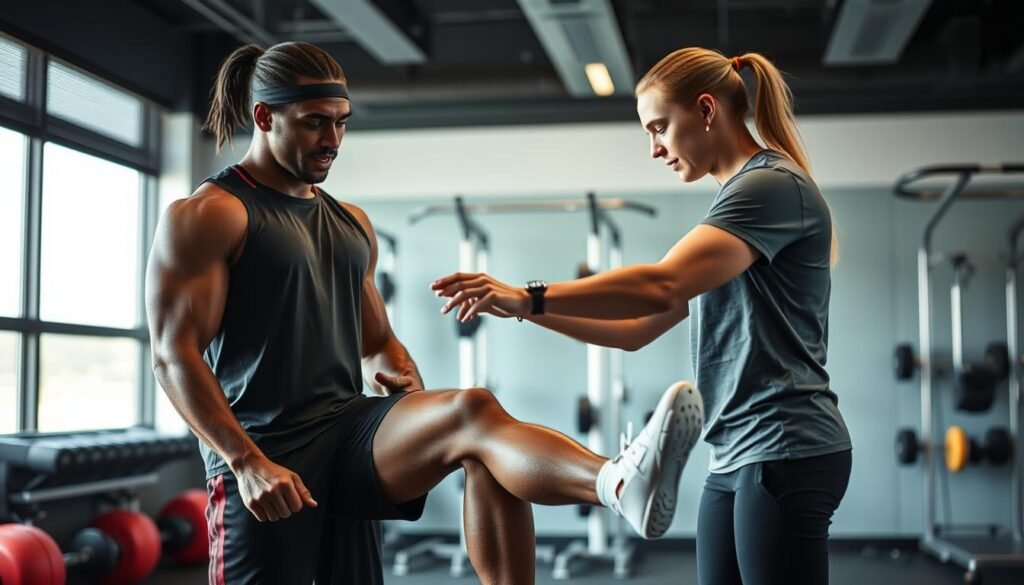
Medial collateral ligament (MCL) sprains are among the most common knee injuries, affecting both athletes and non-athletes alike. However, the recovery journey can look remarkably different between these two groups. Understanding these differences is crucial for setting realistic expectations and optimizing the healing process.
Whether you’re a competitive athlete eager to return to your sport or someone who simply wants to resume normal daily activities, this guide breaks down the key factors that influence MCL sprain recovery time and provides evidence-based strategies to support your healing journey.
Understanding MCL Injuries: The Foundation of Recovery
The medial collateral ligament (MCL) is located on the inner side of the knee, connecting the femur to the tibia
The medial collateral ligament (MCL) is a thick band of tissue that runs along the inner side of your knee, connecting your thigh bone (femur) to your shin bone (tibia). It plays a crucial role in stabilizing the knee joint and preventing excessive inward movement.
MCL sprains typically occur when the knee experiences a force that pushes it inward, stretching or tearing the ligament. This can happen during contact sports like football or soccer, or through non-contact mechanisms like awkward landings or sudden direction changes.
Injury Classification: Understanding Your MCL Sprain Grade
MCL sprains are classified into three grades based on severity. Accurately identifying your injury grade is the first step toward understanding your recovery timeline:
| Grade | Description | Typical Recovery (Athletes) | Typical Recovery (Non-Athletes) |
| Grade I (Mild) | Microscopic tearing of the ligament fibers. The knee remains stable with minimal pain and swelling. | 1-2 weeks | 1-3 weeks |
| Grade II (Moderate) | Partial tear of the MCL. Moderate pain, swelling, and some joint instability when stressed. | 2-4 weeks | 3-6 weeks |
| Grade III (Severe) | Complete tear of the MCL. Significant pain, swelling, and joint instability. | 6-8 weeks | 8-12 weeks |
Not Sure About Your MCL Injury Severity?
Proper diagnosis is crucial for effective recovery. Our specialists can assess your injury and create a personalized rehabilitation plan.
Primary Variables Affecting MCL Sprain Recovery Time
Several key factors influence how quickly you’ll recover from an MCL sprain, regardless of whether you’re an athlete or not. Understanding these variables can help you set realistic expectations and optimize your recovery process.
Injury Severity: The Most Significant Factor
The grade of your MCL sprain is the single most important determinant of recovery time. As outlined in the table above, higher-grade injuries require significantly longer healing periods. This is true for both athletes and non-athletes, though the specific timelines may differ.
Visual comparison of Grade I, II, and III MCL sprains showing increasing tissue damage
Age and Overall Health: The Recovery Foundation
Younger individuals typically heal faster than older adults due to better circulation and cellular regeneration. Additionally, your overall health status—including factors like nutrition, sleep quality, and presence of chronic conditions like diabetes—can significantly impact recovery speed.
Rehabilitation Protocol Adherence: The Recovery Accelerator
Consistently following your prescribed rehabilitation program is perhaps the most controllable factor affecting recovery time. Studies show that patients who adhere to their physical therapy regimens recover up to 40% faster than those who don’t.
Access to Medical Resources: The Recovery Support System
Access to quality healthcare, including specialized orthopedic care, physical therapy, and rehabilitation equipment, can dramatically influence recovery outcomes. This factor often creates a notable difference between athletes (who frequently have better access) and non-athletes.
Athlete-Specific Factors Influencing MCL Recovery
Athletes face unique considerations that can both accelerate and complicate their MCL recovery process. Understanding these factors is essential for coaches, sports medicine professionals, and athletes themselves.
Athletes often have access to specialized rehabilitation facilities and professionals
Sport-Specific Demands: The Return-to-Play Challenge
Different sports place varying demands on the MCL. Contact sports like football and rugby, which involve lateral movements and direct contact, require more complete healing before safe return. Sports with primarily straight-line movements may allow earlier return with appropriate bracing.
High-Risk Sports for MCL Reinjury:
- Football (especially linemen positions)
- Soccer
- Rugby
- Basketball
- Skiing
Lower-Risk Sports for MCL Reinjury:
- Swimming
- Cycling
- Running (on even surfaces)
- Rowing
- Controlled weight training
Competitive Timelines: The Pressure Factor
Athletes often face external pressure to return quickly due to competition schedules, team needs, or contractual obligations. This pressure can lead to premature return to play, increasing reinjury risk. Studies show that athletes who return before full healing have a 30-40% higher reinjury rate in the same season.
Access to Advanced Treatments: The Recovery Advantage
Professional and collegiate athletes typically have access to cutting-edge treatments that may accelerate healing:
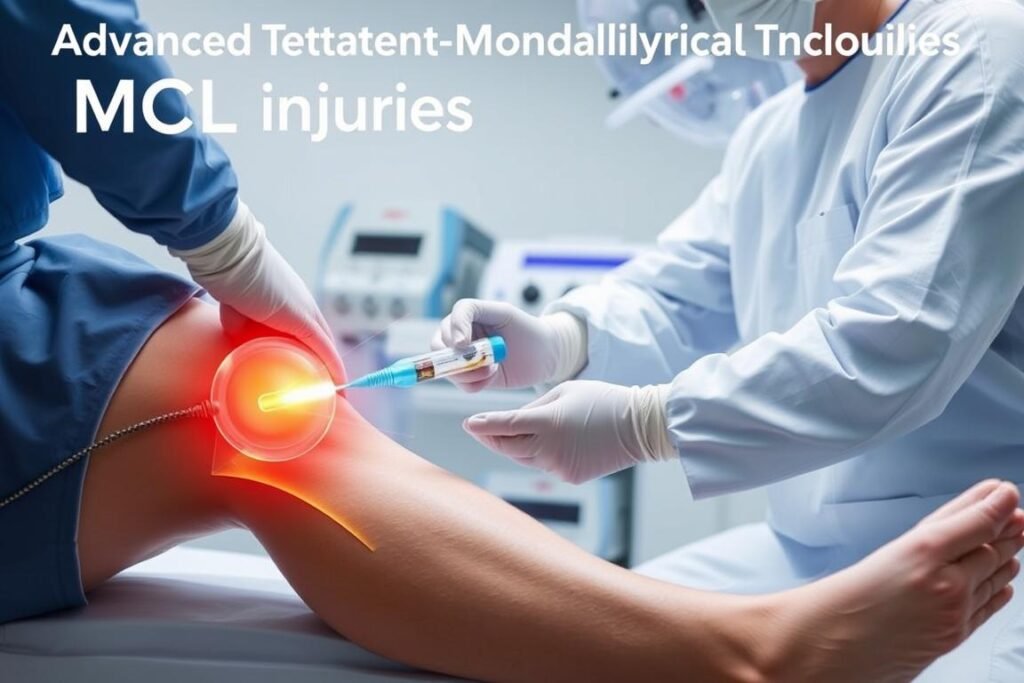
Advanced treatments like platelet-rich plasma therapy can accelerate healing in athletes
- Platelet-Rich Plasma (PRP) Therapy: Injection of concentrated platelets to stimulate healing
- Continuous Passive Motion (CPM) Machines: Devices that gently move the joint to prevent stiffness
- Anti-Gravity Treadmills: Allow earlier return to running with reduced weight-bearing
- Cryotherapy Chambers: Whole-body cold therapy to reduce inflammation
- Daily Professional Treatment: Access to daily hands-on therapy from sports medicine specialists
Psychological Factors: The Mental Game
Athletes often experience significant psychological pressure during recovery, including fear of losing position, anxiety about performance after return, and identity concerns. These psychological factors can either motivate adherence to rehabilitation or lead to rushed return and compensatory movement patterns.
Non-Athlete Considerations in MCL Recovery
While non-athletes may not face the pressure of returning to competitive sports, they encounter their own unique set of challenges during MCL recovery. Understanding these factors is essential for healthcare providers and patients alike.
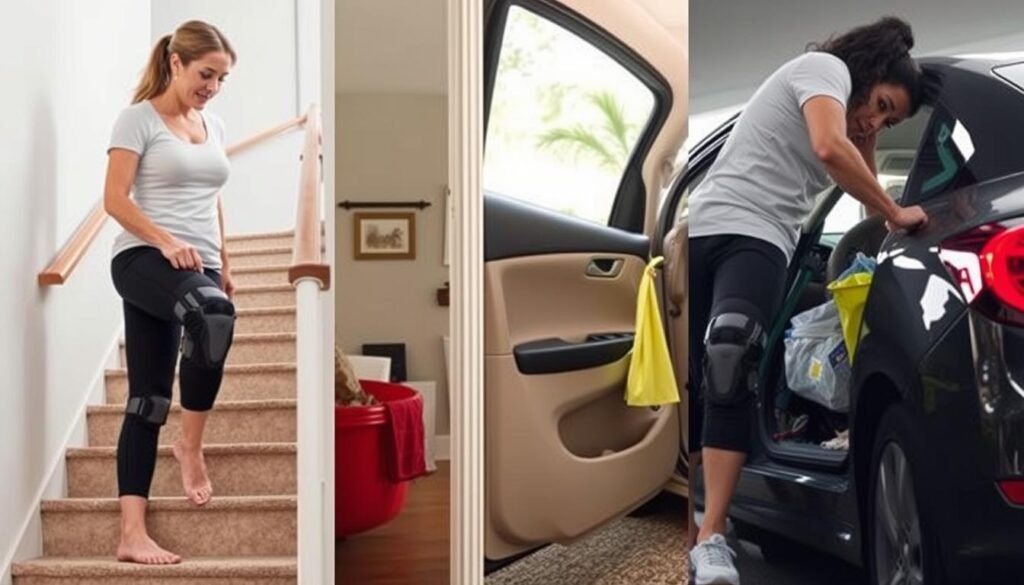
Non-athletes must navigate daily activities while supporting MCL recovery
Occupational Requirements: The Work Factor
Job demands significantly impact non-athlete recovery. Those with physically demanding occupations (construction, nursing, retail) face greater challenges than those with sedentary jobs. Workplace accommodations and modified duties are often necessary but not always available.
| Occupation Type | Challenges | Recommended Accommodations |
| Sedentary (Office work) | Prolonged sitting, limited movement | Elevated leg position, hourly movement breaks, ergonomic setup |
| Light Physical (Retail, Teaching) | Extended standing, occasional lifting | Supportive brace, anti-fatigue mat, sitting breaks |
| Heavy Physical (Construction, Nursing) | Heavy lifting, squatting, climbing | Modified duties, temporary reassignment, gradual return |
Adherence to Rest Protocols: The Compliance Challenge
Non-athletes often struggle with adhering to rest and activity modification recommendations due to work, family, and household responsibilities. Unlike athletes who may have dedicated recovery time, non-athletes typically must balance recovery with daily obligations.
Limited Access to Specialized Care: The Resource Gap
Many non-athletes have limited access to specialized orthopedic care and physical therapy due to insurance constraints, geographic location, or scheduling difficulties. This can result in fewer therapy sessions and less specialized guidance compared to athletes.

Home-based exercises are often crucial for non-athletes with limited access to physical therapy
Lifestyle Limitations: The Daily Impact
Non-athletes often face significant disruptions to daily activities like childcare, household maintenance, and social engagements. These disruptions can lead to compensatory movements that delay healing or create secondary issues.
Struggling with Daily Activities During Recovery?
Our specialists can help you navigate MCL recovery while maintaining your daily responsibilities. Get practical strategies tailored to your lifestyle.
Comparative Analysis: Athletes vs. Non-Athletes Recovery Timeline
Research consistently shows differences in MCL recovery timelines between athletes and non-athletes. Understanding these differences can help set appropriate expectations and recovery goals.
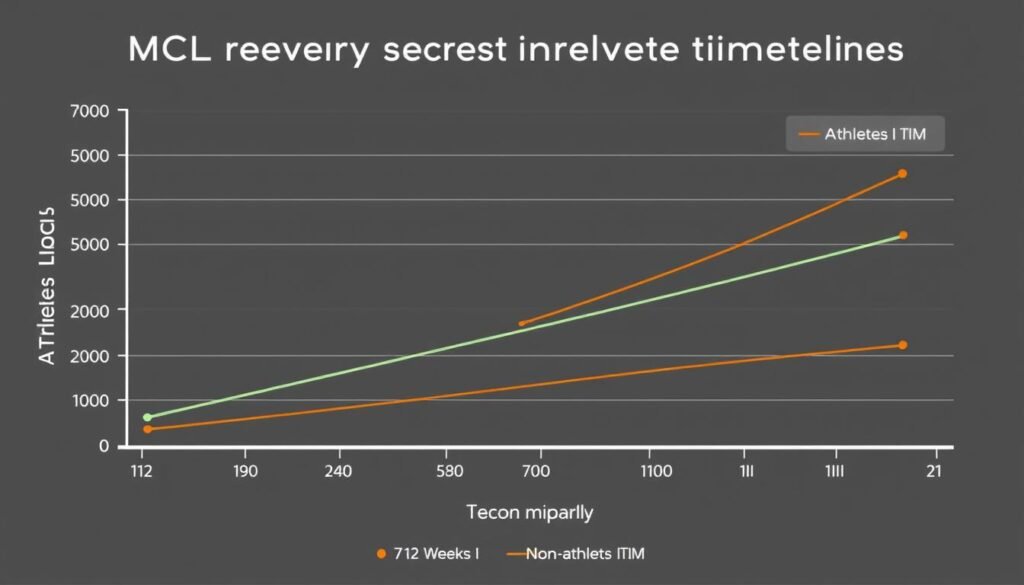
Comparative recovery curves for athletes vs. non-athletes with MCL sprains
Average Recovery Durations by Population
Clinical studies reveal consistent patterns in recovery timelines between these populations:
| Recovery Milestone | Athletes (Average Time) | Non-Athletes (Average Time) | Key Difference Factors |
| Full Weight Bearing | 3-7 days | 5-10 days | Baseline fitness, access to gait training |
| Normal Walking (No Brace) | 1-3 weeks | 2-4 weeks | Muscle strength, proprioception |
| Return to Light Activity | 2-4 weeks | 3-6 weeks | Rehabilitation intensity, baseline conditioning |
| Full Recovery (Grade II) | 4-6 weeks | 6-8 weeks | Treatment frequency, advanced modalities |
| Return to Sport/Full Activity | 6-8 weeks | 8-12 weeks | Specialized rehabilitation, psychological readiness |
Research-Backed Findings
A 2021 study in the Orthopaedic Journal of Sports Medicine found that elite European soccer players returned to play in an average of 23 days following MCL injuries, significantly faster than the general population’s 35-42 day average for similar grade injuries.
“Athletes not only have physiological advantages in recovery due to baseline fitness but also benefit from intensive, daily rehabilitation protocols that aren’t typically available to non-athletes. This creates a significant disparity in recovery timelines between these populations.”
However, it’s important to note that faster return doesn’t always mean better long-term outcomes. A 2018 study found that while athletes returned to activity faster, non-athletes had fewer reinjury rates at the one-year mark (7% vs. 18% for athletes).
Evidence-Based Strategies to Optimize MCL Recovery
Regardless of whether you’re an athlete or not, certain evidence-based approaches can help optimize your MCL recovery process. These strategies can help you achieve the best possible outcome in the shortest appropriate timeframe.

Phased rehabilitation approach for optimal MCL recovery
Phased Rehabilitation: The Structured Approach
Research supports a phased approach to MCL rehabilitation, with each phase building upon the previous:
Phase 1: Protection (Days 1-7)
- RICE protocol (Rest, Ice, Compression, Elevation)
- Protected weight-bearing with crutches as needed
- Gentle range of motion exercises within pain limits
- Isometric quadriceps contractions
Phase 2: Motion Recovery (Weeks 1-3)
- Progressive weight-bearing as tolerated
- Increased range of motion exercises
- Stationary cycling with minimal resistance
- Straight leg raises and hip strengthening
- Proprioception exercises
Phase 3: Strengthening (Weeks 3-6)
- Full weight-bearing activities
- Progressive resistance training
- Balance and proprioception advancement
- Functional movement patterns
- Sport or activity-specific exercises
Cross-Training: Maintaining Fitness While Healing
Maintaining cardiovascular fitness and overall strength during recovery is crucial, especially for athletes. Safe cross-training options include:
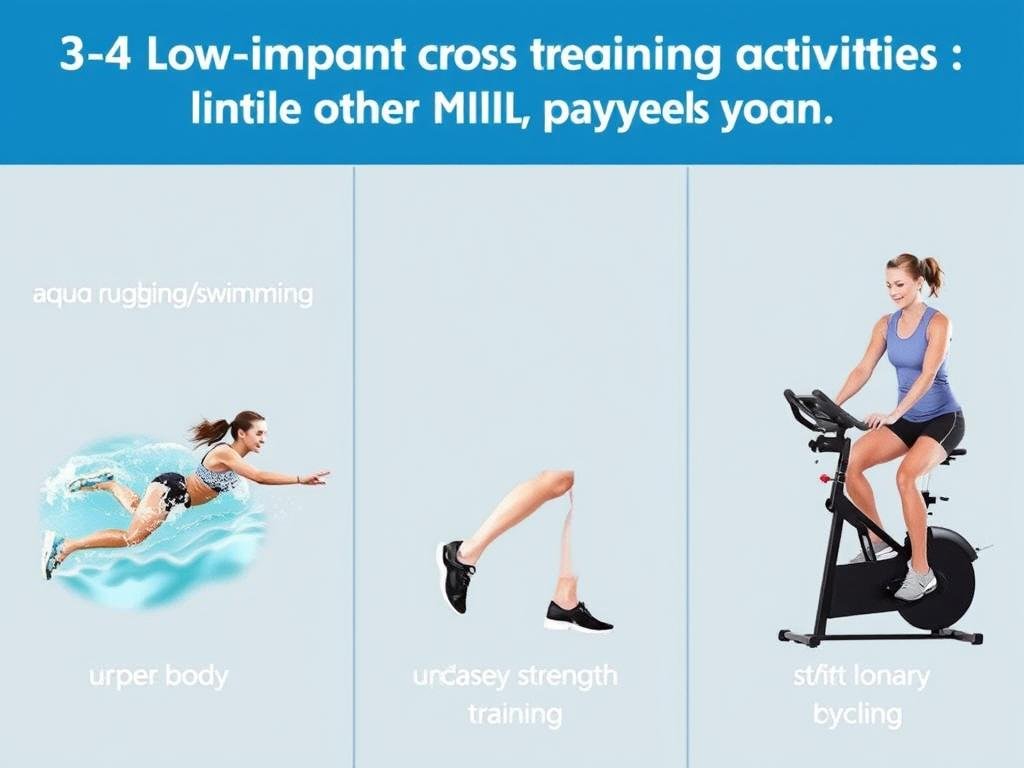
Low-impact cross-training helps maintain fitness during MCL recovery
- Aquatic Therapy: Water-based exercises provide resistance while reducing weight-bearing stress
- Upper Body Circuit Training: Maintains cardiovascular fitness without stressing the injured knee
- Modified Cycling: With appropriate seat height and minimal resistance
- Controlled Swimming: Avoiding breaststroke kick which stresses the MCL
Nutritional Support: Fueling Recovery
Proper nutrition plays a vital role in ligament healing. Evidence-based nutritional strategies include:
Key Nutrients for Ligament Healing:
- Protein: 1.6-2.0g/kg body weight daily
- Vitamin C: Supports collagen synthesis
- Zinc: Facilitates tissue repair
- Omega-3 Fatty Acids: Reduces inflammation
- Vitamin D: Supports musculoskeletal health
Anti-Inflammatory Foods:
- Fatty fish (salmon, mackerel)
- Berries (especially cherries and blueberries)
- Leafy greens
- Turmeric and ginger
- Nuts and seeds
Psychological Approaches: The Mental Side of Recovery
Research shows that psychological factors significantly impact recovery outcomes. Effective strategies include:
- Goal Setting: Establishing realistic short-term milestones
- Visualization: Mental rehearsal of healing and return to activity
- Stress Management: Techniques like mindfulness and deep breathing
- Social Support: Maintaining connection with teams, workout partners, or support groups
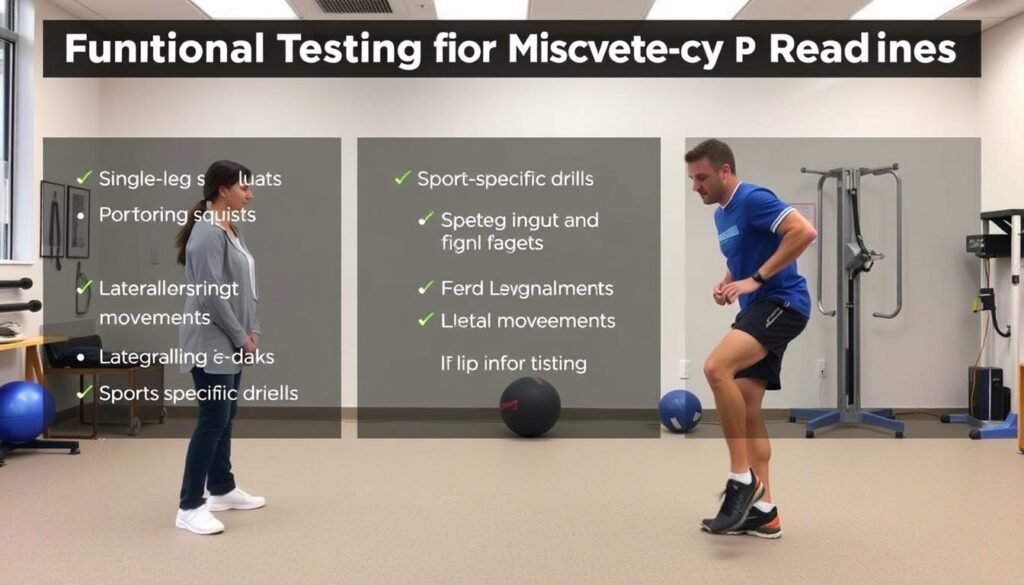
Functional testing is crucial before returning to full activity
Return-to-Activity Testing: The Safety Checkpoint
Before returning to full activity or sport, research supports completing functional testing to ensure the knee is ready. Key assessments include:
- Single-Leg Squat Test: Assesses stability and control
- Y-Balance Test: Measures dynamic stability in multiple directions
- Hop Testing: Single-leg hop for distance, triple hop, crossover hop
- Sport-Specific Movement Assessment: Cutting, pivoting, deceleration
Expert Tip: The injured leg should achieve at least 90% of the performance of the uninjured leg on functional tests before returning to full activity or sport.
Expert Insights: Professional Perspectives on MCL Recovery
Leading orthopedic specialists and sports medicine professionals offer valuable insights on how recovery expectations differ between athletes and non-athletes.
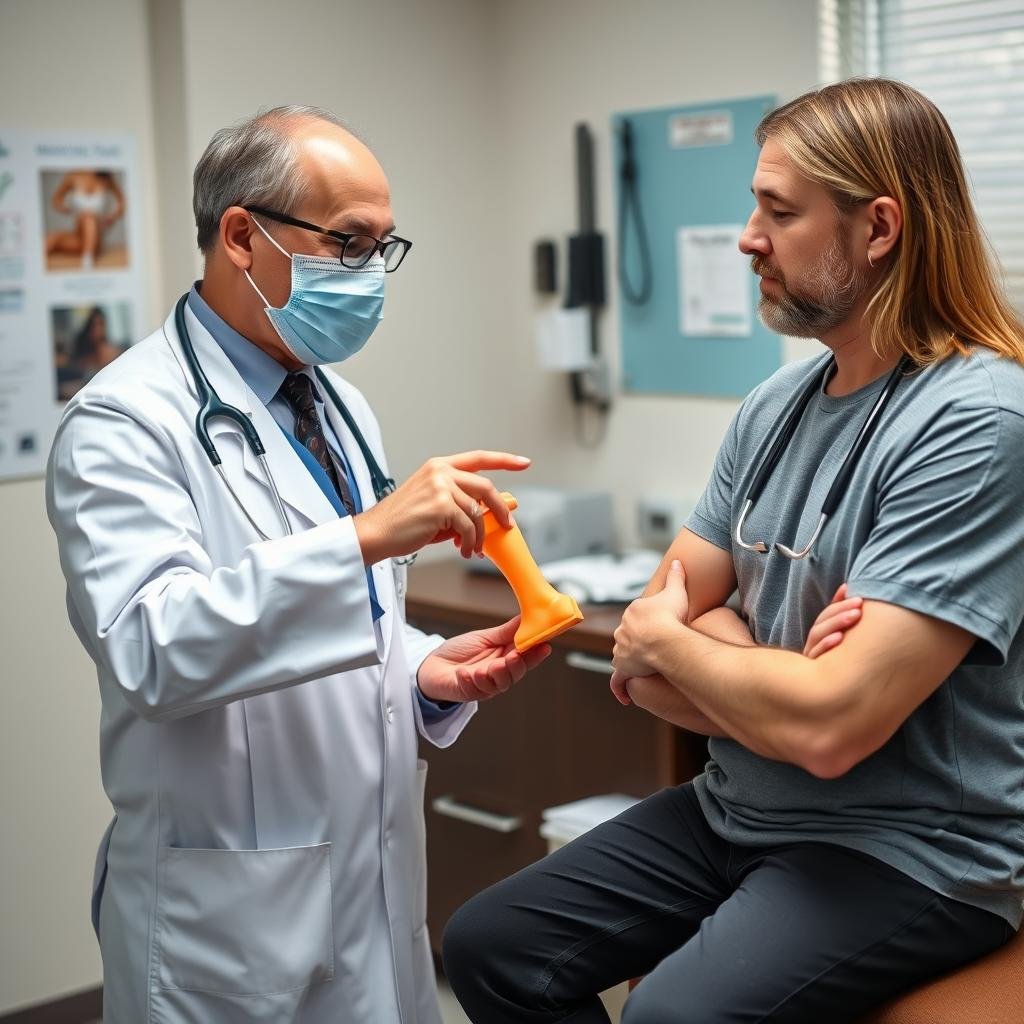
Orthopedic specialists provide crucial guidance for MCL recovery
“The biggest difference I see between athletes and non-athletes isn’t necessarily in the tissue healing time—ligaments heal at their own biological pace—but rather in the surrounding factors: muscle strength, proprioception, and psychological readiness. Athletes typically have better baseline conditioning and access to more intensive rehabilitation, which creates the appearance of faster healing.”
“Non-athletes often face greater challenges in recovery not because their bodies heal differently, but because they must balance rehabilitation with work and family responsibilities. They typically have fewer sessions with physical therapists and less time to dedicate to recovery exercises. This is why I often prescribe simpler, more time-efficient home exercise programs for my non-athlete patients.”
Key Takeaways from Sports Medicine Research
Recent studies in sports medicine journals provide valuable insights for both populations:
- A 2020 systematic review found that early controlled motion results in better outcomes than immobilization for Grade I and II MCL sprains
- Research from the American Journal of Sports Medicine indicates that neuromuscular training reduces reinjury risk by 60% in both athletes and non-athletes
- A 2019 study showed that psychological readiness scores were more predictive of successful return to sport than physical measures alone

Rehabilitation approaches often differ significantly between athletic and non-athletic populations
When to Seek Additional Help
Experts agree that certain warning signs indicate the need for additional medical consultation:
Warning Signs During MCL Recovery:
- Increasing rather than decreasing pain
- Persistent swelling that doesn’t improve
- Inability to bear weight after the initial acute phase
- Development of new symptoms (locking, catching, giving way)
- Plateau in progress for more than two weeks
Conclusion: Bridging the Gap in MCL Recovery
While athletes and non-athletes face different challenges during MCL recovery, the fundamental principles of healing remain the same. The key differences lie in access to resources, time available for rehabilitation, baseline fitness, and external pressures.
By understanding these differences and implementing evidence-based strategies appropriate for your situation, you can optimize your recovery regardless of your athletic status. The most important factors remain:
- Accurate diagnosis and appropriate early management
- Structured, progressive rehabilitation
- Patience with the biological healing process
- Attention to both physical and psychological aspects of recovery
- Functional testing before return to full activity
Whether you’re an elite athlete aiming to return to competition or someone simply wanting to resume daily activities without pain, following these principles will help you achieve the best possible outcome in the appropriate timeframe for your specific situation.
Need Personalized Guidance for Your MCL Recovery?
Our specialists can help you navigate the recovery process with a plan tailored to your specific needs, whether you’re an athlete or not.
